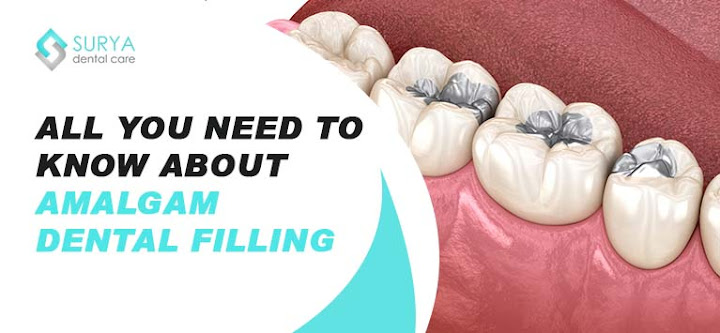
Amalgam is one of the most popular types of dental fillings used to fill tooth cavities, which is considered a safe, reliable, and effective treatment for tooth decay in past and recent times. They are often known as silver fillings because of their silver-like appearance.
It has been used for more than 150 years because it is long-lasting and less expensive than other cavity-filling materials, such as gold and tooth-colored composite fillings. In this blog, you will learn everything about amalgam dental fillings.
What is amalgam dental filling?
Amalgam is a type of dental filling used to fill cavities brought on by tooth decay.
It is a combination of metals made up of liquid elemental mercury, powdered silver, tin, and copper alloy. And palladium, indium, or zinc may also be used in small quantities.
The elements of mercury make up about half (50%) of the weight of tooth amalgam.
Nowadays, tooth-colored materials are used to restore teeth. So these fillings are used less often now than in the past. Moreover, it endures longer, particularly in teeth that undergo significant pressure and wear from biting and chewing.
What should I be aware of before getting an amalgam filling?
You and your dentist should decide what type of filling material to use to deal with your dental decay. Before considering this type of filling as your choice, you should know its pros and cons before having them.
Pros
- They can last up to 15 years with proper care.
- They provide more resistance to corrosion due to the metal alloy used, making them a better choice for larger areas of dental decay.
- Less expensive than other types of materials.
- They can protect from future cavities or decay.
Cons
Amalgam fillings will be worth getting if you are looking for an affordable solution to treat your cavities or decayed teeth. However, it has some drawbacks also that might make you think twice.
- They contain elementary mercury, which can be inhaled or absorbed by the lungs and has been associated with negative effects on the brain and the kidney.
- Some people may have allergic reactions or sensitivity to mercury or other components of a dental filling, such as silver, copper, tin, or zinc.
- They can cause discoloration of the teeth.
- These silver fillings are more noticeable while laughing or opening your mouth wide. They can darken the appearance of your entire teeth and negatively affect the way of your smile by giving a dull and grayish appearance.
Alternatives for amalgam fillings
There are currently five other types of restorative materials for filling dental decay.
- Composite resin
- Porcelain
- Resin ionomer
- Glass ionomer
- Gold alloys
The purpose of using mercury in tooth amalgam
The purpose of using mercury in amalgam is to bind the alloy particles together to create a strong, long-lasting, solid filling. It has a unique qualities (At room temperature, it is a liquid that bonds well to the powdered metals), making it a crucial part of dental amalgam that adds to its durability.
Is it safe to get dental amalgam?
The safety of getting dental amalgam has been the subject of many studies. The USA’s FDA (Food and Drug Administration) evaluated this study in 2009. The study by the FDA concluded that these fillings are safe for adults and children aged six and above.
Bottom line
According to some studies, there is no evidence that amalgam fillings can cause problems. But it would be best if you remembered to replace those dental fillings once worn, broken, or when the filling has rotted under it.
Visit our office or call us, if you have any concerns about dental amalgam filling.



